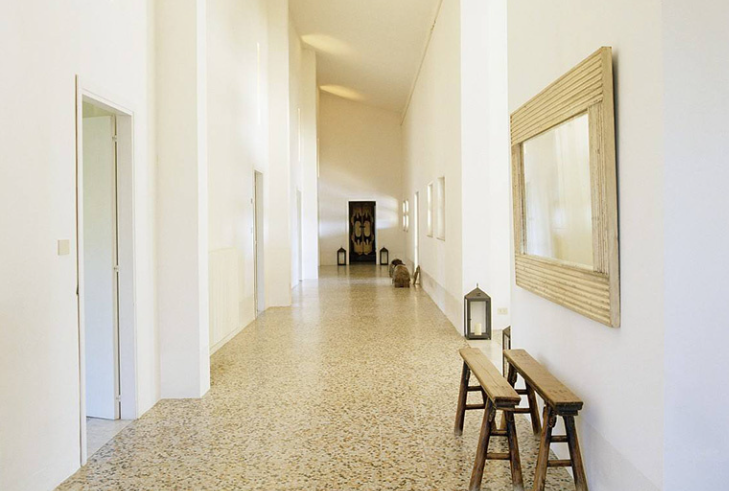The Origin and Evolution Process of Concrete Floor
Concrete floor is a kind of integral ground that uses cement and stone particles as the main material. In the course of China's ground development, it has successively experienced such forms as terrazzo floor, fair-faced concrete floor, and colored wear-resistant floor.
- Still fashionable terrazzo floor
Terrazzo has the strength, wear resistance and durability of natural stone, and it is smooth, easy to clean, and good integrity. As the indoor floor of a large number of public buildings, it is practical and beautiful.
The new type of terrazzo has new developments in color and pattern. The decorative effect can meet the modern aesthetic needs, and it can also meet the requirements of environmental protection. It is safe and non-toxic, does not release harmful substances such as benzene, formaldehyde, and has no radioactivity. In addition, compared with building materials with similar effects, decoration investment can be saved by 2/3. Many universities and hospitals use terrazzo of different tones for indoor floors, which have achieved good appearance and effects.
Because terrazzo feels cold and hard in winter, and need strict construction technology requirements, multiple procedures, and long construction period, these restrict the wide application of terrazzo floors. Especially in recent years, the blind conformity of Chinese people in interior decoration makes terrazzo seem to be no longer fashionable. There is even a "fashionable" method of smashing the terrazzo with better overall effect and replacing it with ceramic floor tiles and natural stone. In contrast, in many developed Western countries, luxurious places that shouldn't be wasteful are never wasted. A large number of airports and offices are all terrazzo floors. The 5,000-square-meter main office hall of Endell Performing Arts Company which is the most influential company in Hollywood in Los Angeles uses terrazzo floor, it matches the various high-end decoration materials and fashionable decoration methods throughout the room, and achieves good interior decoration effect.
- Economical and energy-saving fair-faced concrete floor
In 1996, American designer Seth Stein designed the Stan residence in London, England. Most of the floor in the house was gray concrete and was decorated by hand to form an orange peel texture. The Swiss architect Peter Zmthor decorated interior with exquisite fair-faced concrete surfaces of the Kansaus Art Museum in Bregenz, Austria. The concrete floor is given new life.
The Mrgadava Museum of Stone Sculpture designed by Chinese architect Liu Jiakun uses fair-faced concrete as a whole. The interior uses the same rough concrete walls and floors as the exterior, giving the museum a feeling of "underground palace". It can be seen that, as long as the common concrete floor is used properly, it can also create modern and classic places. The study also found that in addition to simple construction and space saving, the concrete surface layer can also avoid pollution or the breeding of bacteria, and it also has a significant effect on reducing energy consumption of building.
- Beautiful and practical colored wear-resistant floor
Colored wear-resistant floor is also called imprinted concrete or textured concrete, which is the floor that color fixing, color matching and surface strengthening on the unhardened concrete surface during construction. The colored wear-resistant floor changes the gray tone and flat texture of fair-faced concrete. It can form various colors such as yellow, green, orange, and purple. And people can also choose the pattern and texture according to their needs, which has a better visual effect.



Z0OB_%E5%89%AF%E6%9C%AC.jpg)


Comments
Post a Comment